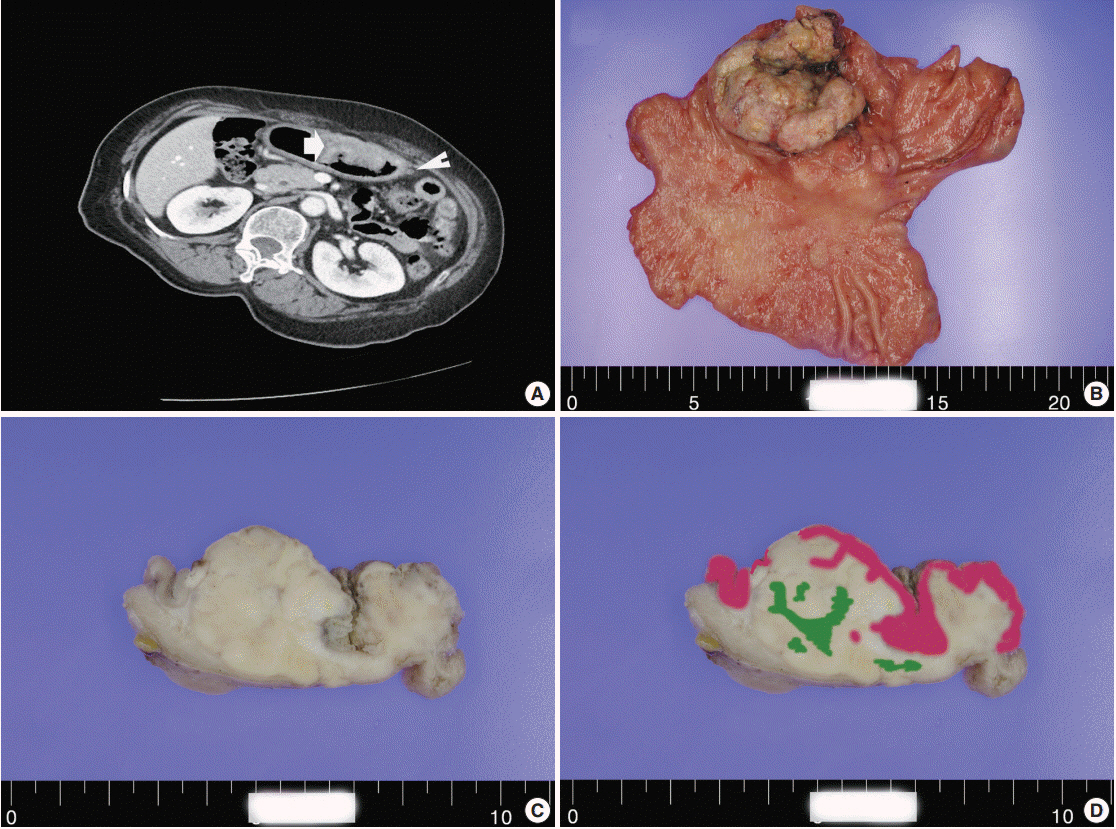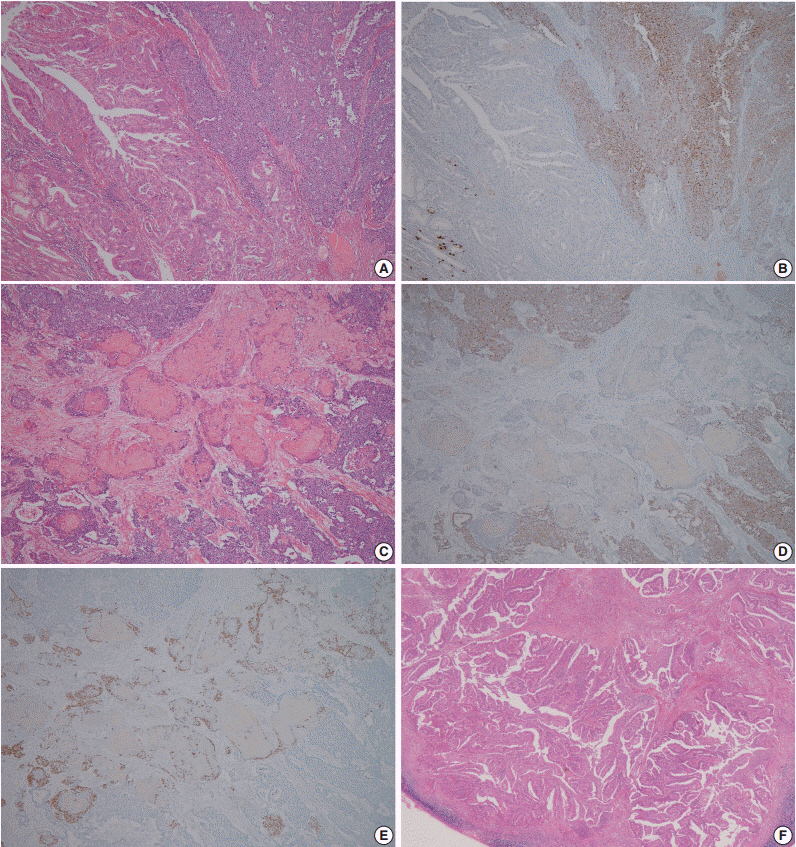J Pathol Transl Med.
2016 Jul;50(4):318-321. 10.4132/jptm.2015.10.17.
Gastric Mixed Adenoneuroendocrine Carcinoma with Squamous Differentiation: A Case Report
- Affiliations
-
- 1Department of Pathology, Kyungpook National University Hospital, Kyungpook National University Medical Center, Kyungpook National University School of Medicine, Daegu, Korea. san_0729@naver.com
- 2Department of Surgery, Gastric Cancer Center, Kyungpook National University Medical Center, Kyungpook National University School of Medicine, Daegu, Korea.
- 3Department of Pathology, Samsung Changwon Hospital, Sungkyunkwan University School of Medicine, Changwon, Korea.
- KMID: 2345558
- DOI: http://doi.org/10.4132/jptm.2015.10.17
Abstract
- No abstract available.
Figure
Cited by 1 articles
-
Multiregion Comprehensive Genomic Profiling of a Gastric Mixed Neuroendocrine-Nonneuroendocrine Neoplasm with Trilineage Differentiation
Faheem Farooq, Kevin Zarrabi, Keith Sweeney, Joseph Kim, Jela Bandovic, Chiraag Patel, Minsig Choi
J Gastric Cancer. 2018;18(2):200-207. doi: 10.5230/jgc.2018.18.e16.
Reference
-
1. Bosman FT, Carneiro F, Hruban RH, Theise ND. WHO classification of tumours of the digestive system. 4th ed. Lyon: IARC Press;2010.2. Volante M, Rindi G, Papotti M. The grey zone between pure (neuro)endocrine and non-(neuro)endocrine tumours: a comment on concepts and classification of mixed exocrine-endocrine neoplasms. Virchows Arch. 2006; 449:499–506.
Article3. Haratake J, Horie A, Inoshita S. Gastric small cell carcinoma with squamous and neuroendocrine differentiation. Pathology. 1992; 24:116–20.
Article4. Shibuya H, Azumi N, Abe F. Gastric small-cell undifferentiated carcinoma with adeno and squamous cell carcinoma components. Acta Pathol Jpn. 1985; 35:473–80.5. Pericleous M, Toumpanakis C, Lumgair H, et al. Gastric mixed adenoneuroendocrine carcinoma with a trilineage cell differentiation: case report and review of the literature. Case Rep Oncol. 2012; 5:313–9.
Article6. Bartley AN, Rashid A, Fournier KF, Abraham SC. Neuroendocrine and mucinous differentiation in signet ring cell carcinoma of the stomach: evidence for a common cell of origin in composite tumors. Hum Pathol. 2011; 42:1420–9.
Article7. Kim KM, Kim MJ, Cho BK, Choi SW, Rhyu MG. Genetic evidence for the multi-step progression of mixed glandular-neuroendocrine gastric carcinomas. Virchows Arch. 2002; 440:85–93.
Article
- Full Text Links
- Actions
-
Cited
- CITED
-
- Close
- Share
- Similar articles
-
- Mixed adenoneuroendocrine carcinoma of the ampulla of Vater: Three case reports and a literature review
- Mixed Adenoneuroendocrine Gastric Carcinoma: A Case Report and Review of the Literature
- Multiregion Comprehensive Genomic Profiling of a Gastric Mixed Neuroendocrine-Nonneuroendocrine Neoplasm with Trilineage Differentiation
- Three Cases of Primary Adenosquamous Carcinoma of Stomach
- Mixed adenoneuroendocrine carcinoma in the stomach: a case report with a literature review




